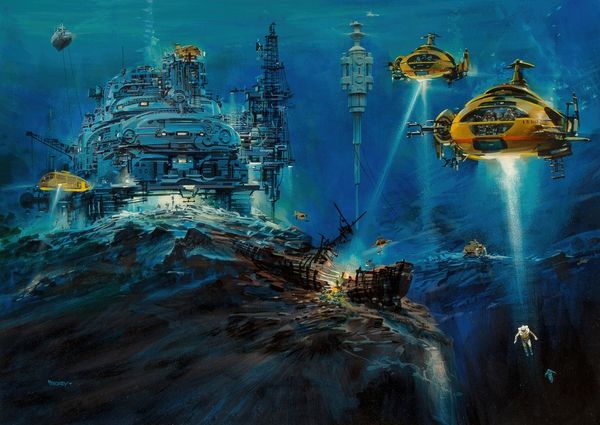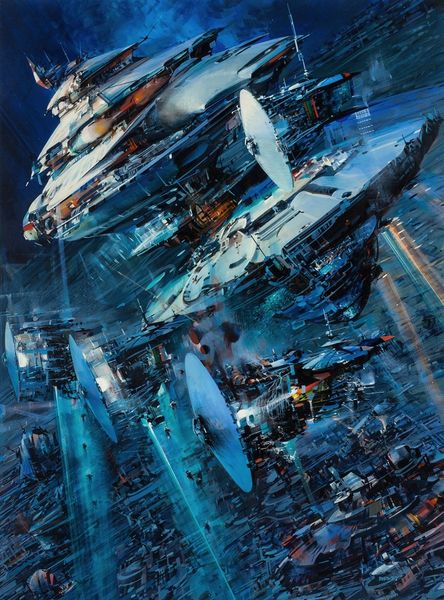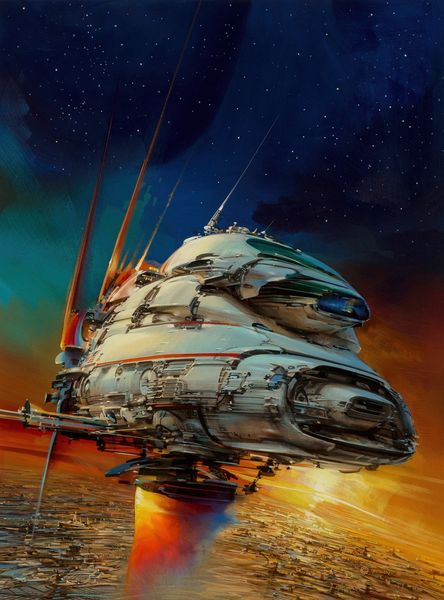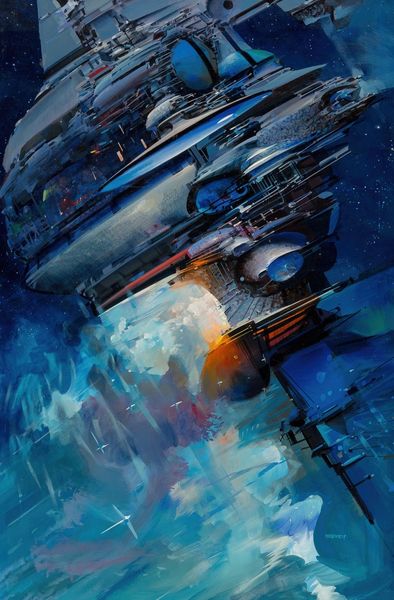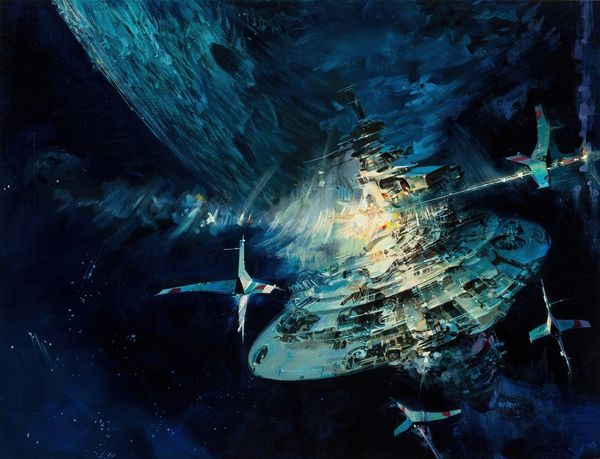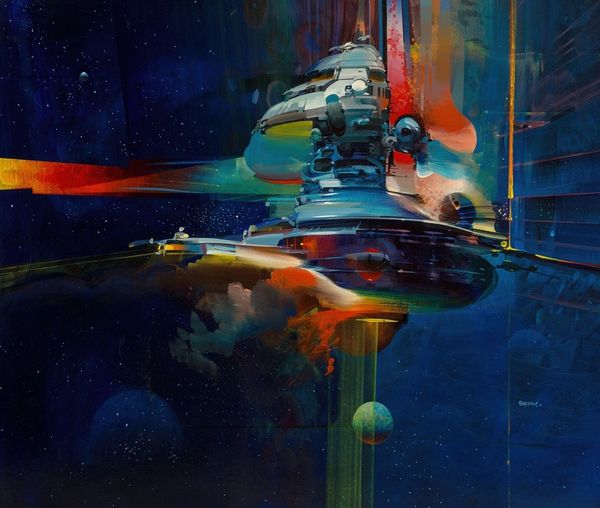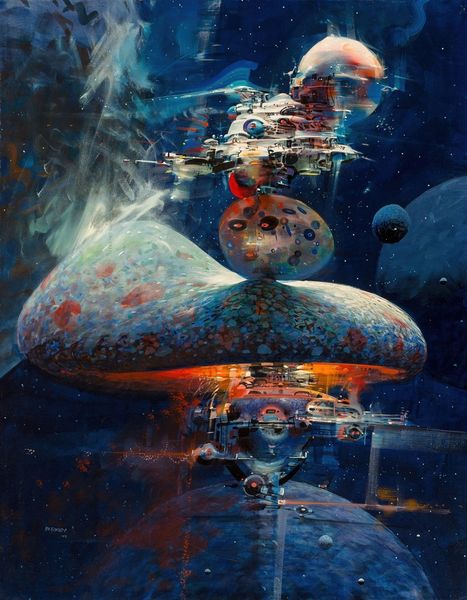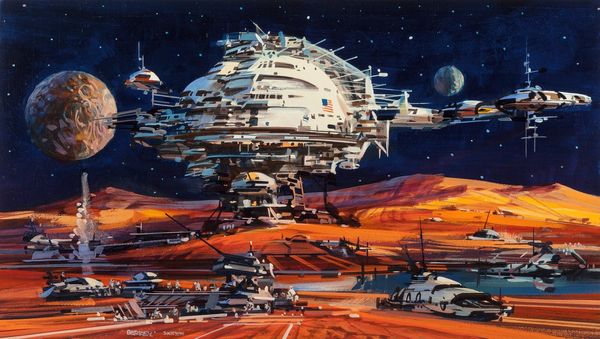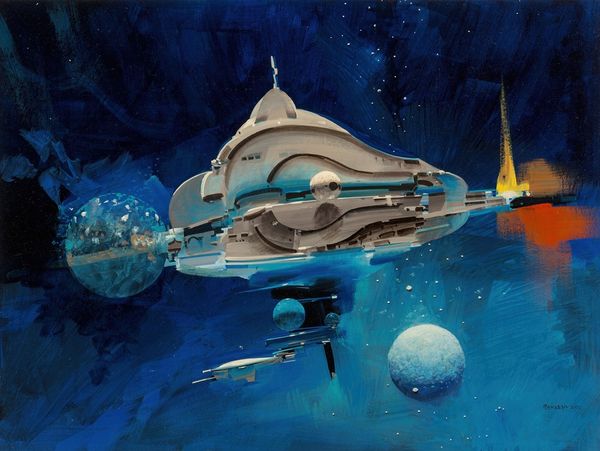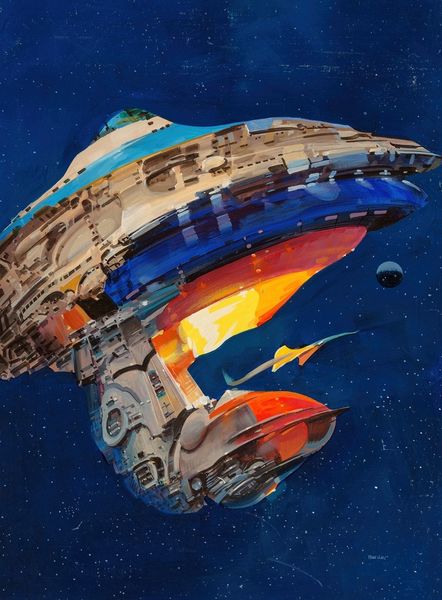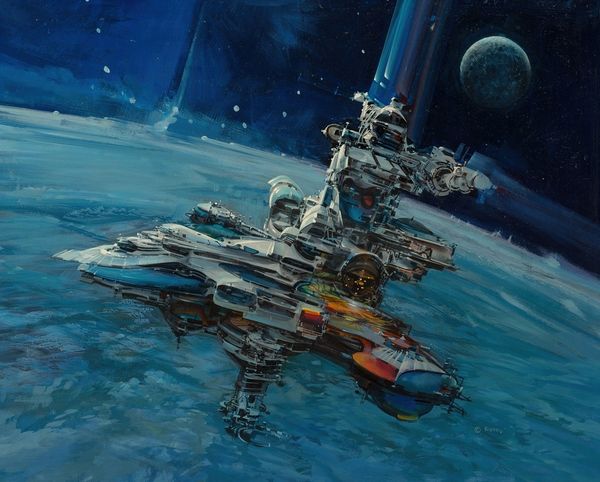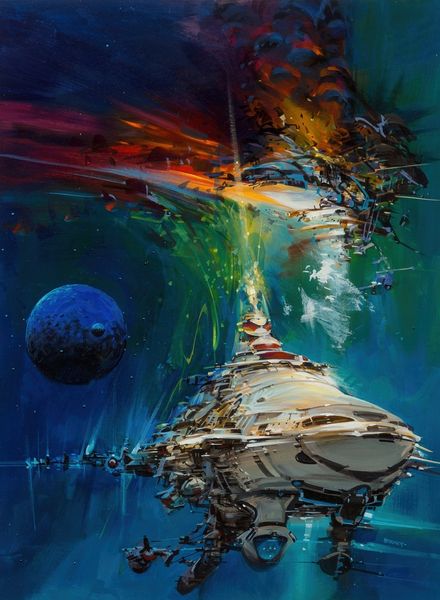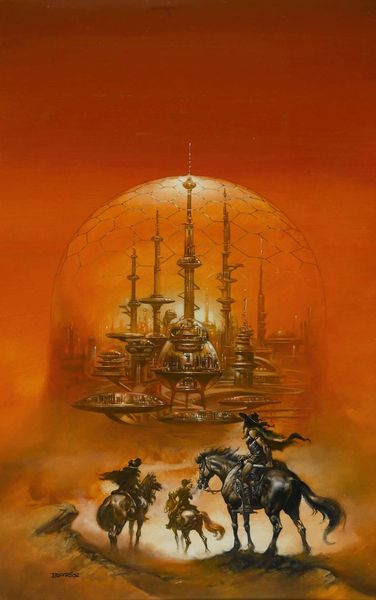
Copyright: Modern Artists: Artvee
Editor: So, this is John Berkey’s cover for the paperback edition of "Run to the Stars", painted in 1986, supposedly in oil. I’m really struck by the sort of retro-futuristic feel; the image gives me an industrial feeling mixed with the aspiration to push into the future. What do you make of it? Curator: I see a compelling vision of speculative production. Consider the medium: oil paint, typically associated with established art historical canons, here applied to mass-produced book cover, effectively collapsing boundaries between ‘high’ and ‘low’ art forms. How might the process of translating this original painting to a printed paperback, meant for wide distribution and consumption, impact our understanding of its materiality? Editor: That's interesting. It is like an artistic statement reproduced as a commercial artefact. I mean, it's mass produced... doesn't that affect the aura of the original? Curator: Precisely. Berkey’s detailed cityscape in the backdrop, seemingly forged from steel and concrete, invites us to ponder on the resources required to construct such a metropolis and the labor involved. The central spaceship becomes a symbol of technological advancement inextricably tied to the materials that form it. Where do these materials originate? Who mines and fabricates them? Editor: Right, thinking about the resources necessary... and then it's meant to get tossed around in backpacks, possibly discarded after reading. The transience is an interesting contradiction. Curator: Indeed. And this cover art, initially designed to entice consumers, becomes a poignant example of capitalist cycles of production, consumption, and, ultimately, potential obsolescence. How does understanding the social life of this paperback change your perception of its aesthetic value? Editor: I never considered all these angles. Now, I'm more aware of the story this cover communicates, beyond the book itself. Curator: Seeing art through the lens of material conditions enriches our understanding beyond aesthetics alone. It connects the image to the complex social and economic web in which it was created and consumed.
Comments
No comments
Be the first to comment and join the conversation on the ultimate creative platform.
